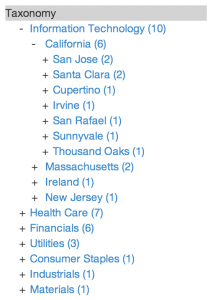Secrets of Cloudera Support: Inside Our Own Enterprise Data Hub by Adam Warrington.
From the post:
Here at Cloudera, we are constantly pushing the envelope to give our customers world-class support. One of the cornerstones of this effort is the Cloudera Support Interface (CSI), which we’ve described in prior blog posts (here and here). Through CSI, our support team is able to quickly reason about a customer’s environment, search for information related to a case currently being worked, and much more.
In this post, I’m happy to write about a new feature in CSI, which we call Monocle Stack Trace.
Stack Trace Exploration with Search
Hadoop log messages and the stack traces in those logs are critical information in many of the support cases Cloudera handles. We find that our customer operation engineers (COEs) will regularly search for stack traces they find referenced in support cases to try to determine where else that stack trace has shown up, and in what context it would occur. This could be in the many sources we were already indexing as part of Monocle Search in CSI: Apache JIRAs, Apache mailing lists, internal Cloudera JIRAs, internal Cloudera mailing lists, support cases, Knowledge Base articles, Cloudera Community Forums, and the customer diagnostic bundles we get from Cloudera Manager.
It turns out that doing routine document searches for stack traces doesn’t always yield the best results. Stack traces are relatively long compared to normal search terms, so search indexes won’t always return the relevant results in the order you would expect. It’s also hard for a user to churn through the search results to figure out if the stack trace was actually an exact match in the document to figure out how relevant it actually is.
To solve this problem, we took an approach similar to what Google does when it wants to allow searching over a type that isn’t best suited for normal document search (such as images): we created an independent index and search result page for stack-trace searches. In Monocle Stack Trace, the search results show a list of unique stack traces grouped with every source of data in which unique stack trace was discovered. Each source can be viewed in-line in the search result page, or the user can go to it directly by following a link.
We also give visual hints as to how the stack trace for which the user searched differs from the stack traces that show up in the search results. A green highlighted line in a search result indicates a matching call stack line. Yellow indicates a call stack line that only differs in line number, something that may indicate the same stack trace on a different version of the source code. A screenshot showing the grouping of sources and visual highlighting is below:
…
See Adam’s post for the details.
I like the imaginative modification of standard search.
Not all data is the same and searching it as if it were, leaves a lot of useful data unfound.

